Navigation
Install the app
How to install the app on iOS
Follow along with the video below to see how to install our site as a web app on your home screen.
Note: This feature may not be available in some browsers.
More options
You are using an out of date browser. It may not display this or other websites correctly.
You should upgrade or use an alternative browser.
You should upgrade or use an alternative browser.
Forts, Fortifications, Citadels etc.
- Thread starter buffnut453
- Start date
Ad: This forum contains affiliate links to products on Amazon and eBay. More information in Terms and rules
More options
Who Replied?Snautzer01
Marshal
- 46,292
- Mar 26, 2007
Gun Position wrecked by Naval Gunfire Omaha D-Day Not a 8.8 cm Flak 18/36/37/41
WN 665 - A 667 type bunker, Omaha Beach - Easy Red Sector Normandy, D-Day, German bunkers in Normandy France



WN 665 - A 667 type bunker, Omaha Beach - Easy Red Sector Normandy, D-Day, German bunkers in Normandy France

German 88mm Gun Position wrecked by Naval Gunfire Omaha D-Day WW2 4x6 Re-Print | eBay
Find many great new & used options and get the best deals for German 88mm Gun Position wrecked by Naval Gunfire Omaha D-Day WW2 4x6 Re-Print at the best online prices at eBay! Free shipping for many products!
www.ebay.com
As an eBay Associate we earn from qualifying purchases.
Good shots!
Snautzer01
Marshal
- 46,292
- Mar 26, 2007
SOVIET MACHINE GUN BUNKER PSKOV



I7 WW2 ORIGINAL GERMAN WEHRMACHT PHOTO OF SOVIET MACHINE GUN BUNKER PSKOV | eBay
Find many great new & used options and get the best deals for I7 WW2 ORIGINAL GERMAN WEHRMACHT PHOTO OF SOVIET MACHINE GUN BUNKER PSKOV at the best online prices at eBay! Free shipping for many products!
www.ebay.com
As an eBay Associate we earn from qualifying purchases.
SOVIET MACHINE GUN BUNKER PSKOV
View attachment 728860

I7 WW2 ORIGINAL GERMAN WEHRMACHT PHOTO OF SOVIET MACHINE GUN BUNKER PSKOV | eBay
Find many great new & used options and get the best deals for I7 WW2 ORIGINAL GERMAN WEHRMACHT PHOTO OF SOVIET MACHINE GUN BUNKER PSKOV at the best online prices at eBay! Free shipping for many products!www.ebay.com
I have found ... it is the casemate artillery mount L-17 model 1940 with the L-11 76-mm tank gun. A similar mount was created for the F-32 gun, later replaced with F-34 one was named ZIS-7 and put into service in 1941.
the source: the net.
As an eBay Associate we earn from qualifying purchases.
Snautzer01
Marshal
- 46,292
- Mar 26, 2007
Well done!
manta22
Banned
Adlerhorst bunker complex located west of Bad Nauheim. Hitler's Western Headquarters. My photos.
Attachments
-
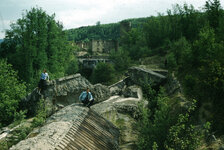 Adlerhorst & Ziegenberg.JPG421.7 KB · Views: 50
Adlerhorst & Ziegenberg.JPG421.7 KB · Views: 50 -
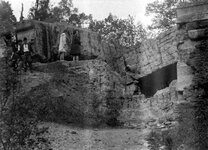 Adlerhorst 3.jpg135.5 KB · Views: 49
Adlerhorst 3.jpg135.5 KB · Views: 49 -
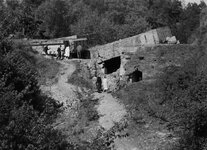 Adlerhorst 1957.jpg134.1 KB · Views: 54
Adlerhorst 1957.jpg134.1 KB · Views: 54 -
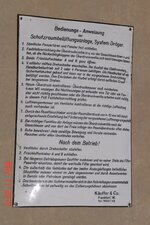 Adlerhorst Bunker Sign 1.jpg414.6 KB · Views: 57
Adlerhorst Bunker Sign 1.jpg414.6 KB · Views: 57 -
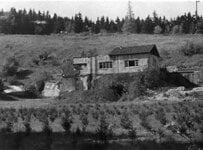 Adlerhorst- Felsennest.jpg95.1 KB · Views: 53
Adlerhorst- Felsennest.jpg95.1 KB · Views: 53 -
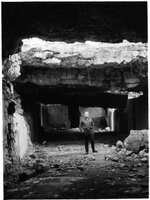 Adlerhorst- Charles Carroll.jpg78.8 KB · Views: 52
Adlerhorst- Charles Carroll.jpg78.8 KB · Views: 52 -
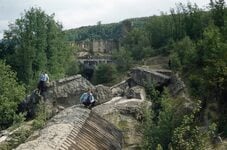 Demolished bunkers GHQ Western Front N. of Frankfurt 1956.jpg306.6 KB · Views: 46
Demolished bunkers GHQ Western Front N. of Frankfurt 1956.jpg306.6 KB · Views: 46 -
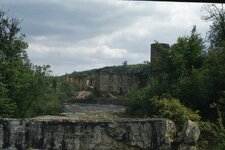 Hitlers bunkers GHQ Western Front near Bad Nauheim 1956.jpg247.3 KB · Views: 51
Hitlers bunkers GHQ Western Front near Bad Nauheim 1956.jpg247.3 KB · Views: 51 -
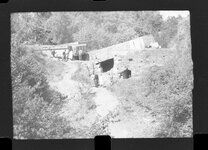 img308.jpg1.3 MB · Views: 47
img308.jpg1.3 MB · Views: 47 -
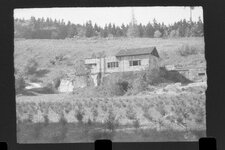 img309.jpg1.1 MB · Views: 47
img309.jpg1.1 MB · Views: 47 -
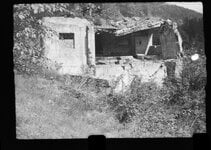 img310.jpg1.2 MB · Views: 51
img310.jpg1.2 MB · Views: 51
Lucky13
Forum Mascot
Orešek Fortress (Russian: Орешек?), also known as Šlissel'burg Fortress or Nöteborg (the German and Swedish names for the locality, respectively), is a fortress located in Šlissel'burg, a locality in Oblast' of Leningrad, and stands on an island at the point where the Neva originates from Lake Ladoga. Built in 1323, from 1612 to 1702 it belonged to the Swedish Empire, which used it for the defense of Swedish Ingria.
Good shot!
Lucky13
Forum Mascot
The fortress of Sarzanello is a military fortification that rises in via alla Fortezza on the hill of Sarzanello, near Sarzana, in the province of La Spezia, and dominates the Val di Magra from above. Its nature and position make it one of the symbols of the city of Sarzana.The slow and progressive decline of Luni, which began as early as the 4th century, led its inhabitants to migrate to the surrounding hills in search of safety, thus giving rise to the increase if not at the birth of new villages and the same hill of Sarzanello was populated by exiles who settled there, gathered around the most important residence of the Bishop.
The existence of a structure for military purposes is mentioned for the first time in a diploma of Emperor Otto I, in which the possession of six castra is granted to the Bishop of Luni, including that of de Sarzano.
With the passing of the years and with the changing political-military situations, the fortress acquired more and more importance, such as to host, around the end of the 10th century, one of the bishop's residences in the valley.
Nice one!
Walls and memorials around the ancient fortified ville of Le Quesnoy, pronounced Le KEN-wa located in northern France. Some general views of the defensive wall surrounding the town.
 DSC_2930
DSC_2930
 DSC_2919
DSC_2919
 DSC_2926
DSC_2926
 DSC_2929
DSC_2929
During the Great War, Le Quesnoy was occupied by the German 22nd Division and was the scene of a quick and daring capture by a small group of New Zealand soldiers on 4 November 1918. The following is recycled from my post on the subject in 2019.
Owing to the two rows of fortifications ringing the town, a frontal assault was undesirable and artillery couldn't be used as there were civilians within the walls, so the Kiwis opted to surround the town and swamp its German defenders with mortar fire against the ramparts and advance under cover of smoke screens. On 3 November the Kiwi brigades began their advance, completely surrounding it by 11am, then pondered the assault on its ramparts. This was to be carried out by battalions of the Rifle Brigade commencing at 5:30am on the morning of the 4th. Carrying out multi-pronged advances covered by mortars, the Kiwis probed the defences, heavily defended by machine gun fire. 2 Lt Leslie Averill, the 4th Rifle Batallion's intelligence officer had been searching for a weak point in the defences and from the west, he came across a branch of the ramparts seemingly undefended, with its approach covered by a defensive wall called a demilune, seen here, looking to the direction from whence he instructed an approach to be made.
 Great War Tour 53
Great War Tour 53
At around 1600, led by 2 Lt Averill, No.14 Platoon of the 4th Rifles, 6 men, ran across the wall at the right and reached this port in the defences. They were carrying a rickety wooden ladder some 30 feet in length...
 Great War Tour 54
Great War Tour 54
...Which the divisional engineers had pilfered from this farm yard a few kilometres from the town, the walled Ferme du Fort Martin...
 Great War Tour 51
Great War Tour 51
Then, crossing the top of the defenses, the soldiers leaned the ladder against this wall, to the right of the portal and began ascending it, a man at a time, owing to its flimsiness. Once the rest of the platoon had reached the inside of the ramparts, the rest of the battalion followed. On their arrival, it all ended rather suddenly - the German commanding officer, realising the precariousness of his position surrendered. 1243 prisoners were taken.
 Great War Tour 55
Great War Tour 55
This is the back cover of John H. Gray's excellent book From The Uttermost Ends Of The Earth; The New Zealand Division On The Western Front 1916 to 1918 - A History And Guide To Its Battlefields (Wilson Scott Publishing, 2010) with a depiction of the scaling of the wall, with 2 Lt Averill having reached the top, by official artist of the NZ Expeditionary Force, George Edmund Butler.
 Great War Tour 56
Great War Tour 56
The plaque mounted to the right of the point at which the men scaled the wall; some 122 Kiwis lost their lives with 500 casualties suffered during the assault on Le Quesnoy. Every year, on the weekend that falls closest to Anzac Day (25th of April) and Remembrance Day, the New Zealand delegate in France and Kiwi travellers make a beeline for this spot to attend a remembrance service.
 Great War Tour 57
Great War Tour 57
This is the gate that the New Zealand Div entered the town following its capture.
 Great War Tour 52
Great War Tour 52
All around the town are memorials to the role of the New Zealanders in liberating the place.
 Great War Tour 59
Great War Tour 59
For those of you puzzled, the All Blacks are New Zealand's rugby union team.
 Great War Tour 60
Great War Tour 60
Le Quesnoy's war memorial in the town centre.
 Great War Tour 63
Great War Tour 63
During the Great War, Le Quesnoy was occupied by the German 22nd Division and was the scene of a quick and daring capture by a small group of New Zealand soldiers on 4 November 1918. The following is recycled from my post on the subject in 2019.
Owing to the two rows of fortifications ringing the town, a frontal assault was undesirable and artillery couldn't be used as there were civilians within the walls, so the Kiwis opted to surround the town and swamp its German defenders with mortar fire against the ramparts and advance under cover of smoke screens. On 3 November the Kiwi brigades began their advance, completely surrounding it by 11am, then pondered the assault on its ramparts. This was to be carried out by battalions of the Rifle Brigade commencing at 5:30am on the morning of the 4th. Carrying out multi-pronged advances covered by mortars, the Kiwis probed the defences, heavily defended by machine gun fire. 2 Lt Leslie Averill, the 4th Rifle Batallion's intelligence officer had been searching for a weak point in the defences and from the west, he came across a branch of the ramparts seemingly undefended, with its approach covered by a defensive wall called a demilune, seen here, looking to the direction from whence he instructed an approach to be made.
At around 1600, led by 2 Lt Averill, No.14 Platoon of the 4th Rifles, 6 men, ran across the wall at the right and reached this port in the defences. They were carrying a rickety wooden ladder some 30 feet in length...
...Which the divisional engineers had pilfered from this farm yard a few kilometres from the town, the walled Ferme du Fort Martin...
Then, crossing the top of the defenses, the soldiers leaned the ladder against this wall, to the right of the portal and began ascending it, a man at a time, owing to its flimsiness. Once the rest of the platoon had reached the inside of the ramparts, the rest of the battalion followed. On their arrival, it all ended rather suddenly - the German commanding officer, realising the precariousness of his position surrendered. 1243 prisoners were taken.
This is the back cover of John H. Gray's excellent book From The Uttermost Ends Of The Earth; The New Zealand Division On The Western Front 1916 to 1918 - A History And Guide To Its Battlefields (Wilson Scott Publishing, 2010) with a depiction of the scaling of the wall, with 2 Lt Averill having reached the top, by official artist of the NZ Expeditionary Force, George Edmund Butler.
The plaque mounted to the right of the point at which the men scaled the wall; some 122 Kiwis lost their lives with 500 casualties suffered during the assault on Le Quesnoy. Every year, on the weekend that falls closest to Anzac Day (25th of April) and Remembrance Day, the New Zealand delegate in France and Kiwi travellers make a beeline for this spot to attend a remembrance service.
This is the gate that the New Zealand Div entered the town following its capture.
All around the town are memorials to the role of the New Zealanders in liberating the place.
For those of you puzzled, the All Blacks are New Zealand's rugby union team.
Le Quesnoy's war memorial in the town centre.
Lucky13
Forum Mascot
Wisłoujście Fortress, Gdańsk, Poland....
Photo: vickarella
That picture with a man on top of the tower illustrates a point. You need a tower of approximately that minimum diameter to have a spiral staircase where people can pass each other. The "arrow slits" may have been able to be used to fire weapons, but the main use was to let in light. Nothing easier than falling over in one of those things in the dark.
Users who are viewing this thread
Total: 1 (members: 0, guests: 1)
Similar threads
- Replies
- 18
- Views
- 2K
